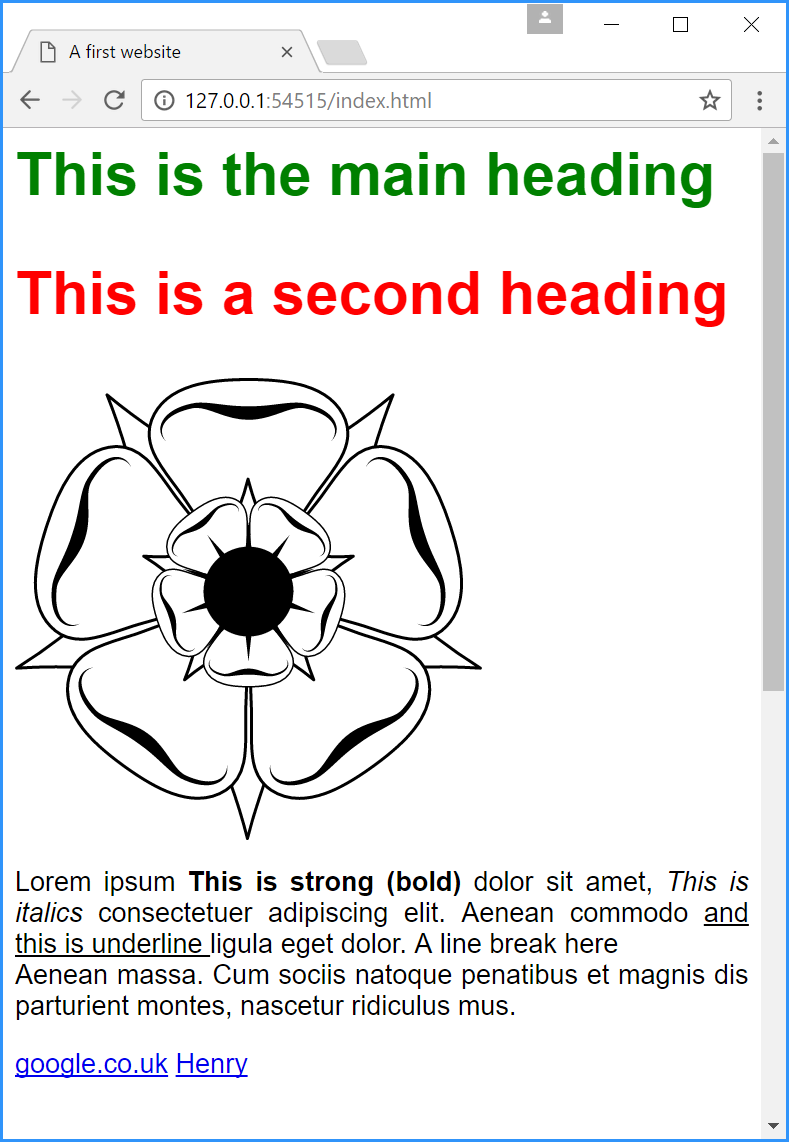5.6
CSS inheritance
It is possible to define a global rule for all text in an HTML document using the inheritance characteristics of CSS.
In an HTML document, all the text that appears on a web page is listed in the <body> section of the document. By defining a style for <body>, all elements within the body section will adopt that body style as the basis for its own style; thus:
body {
font-family: helvetica Neue, arial;
font-size: 18px;
}
h1 {
color: green;
font-size: 40px;
}
h2 {
color: red;
font-size: 40px;
}
p {
text-align:justify;
}
| Code 5.6.1 style.css (body style) |
Here, by defining the font family and basic font size in the body selector, all text that appears in the <body> section of the document will have this font family and size (in this case Arial and 18 pixels). It is now only necessary to change the bits that need to be changed for each style: for heading 1 and 2, this is the colour and the font size; for paragraph text the alignment is changed to justify.
This gives:
This looks very similar to the previous picture, and so it should all we’ve done is consolidate the styles we already had. The only difference is the links to Google and the picture of Henry are now in Arial and are 18 pixels (the style defined for <body>).
This is an important concept, it’s called inheritance, and it means that all ‘child’ elements inherit the properties of their ‘parent’ element unless subsequently overwritten.
It is very useful to be able to do this; effectively we are setting a default set of properties for everything on the web page.
